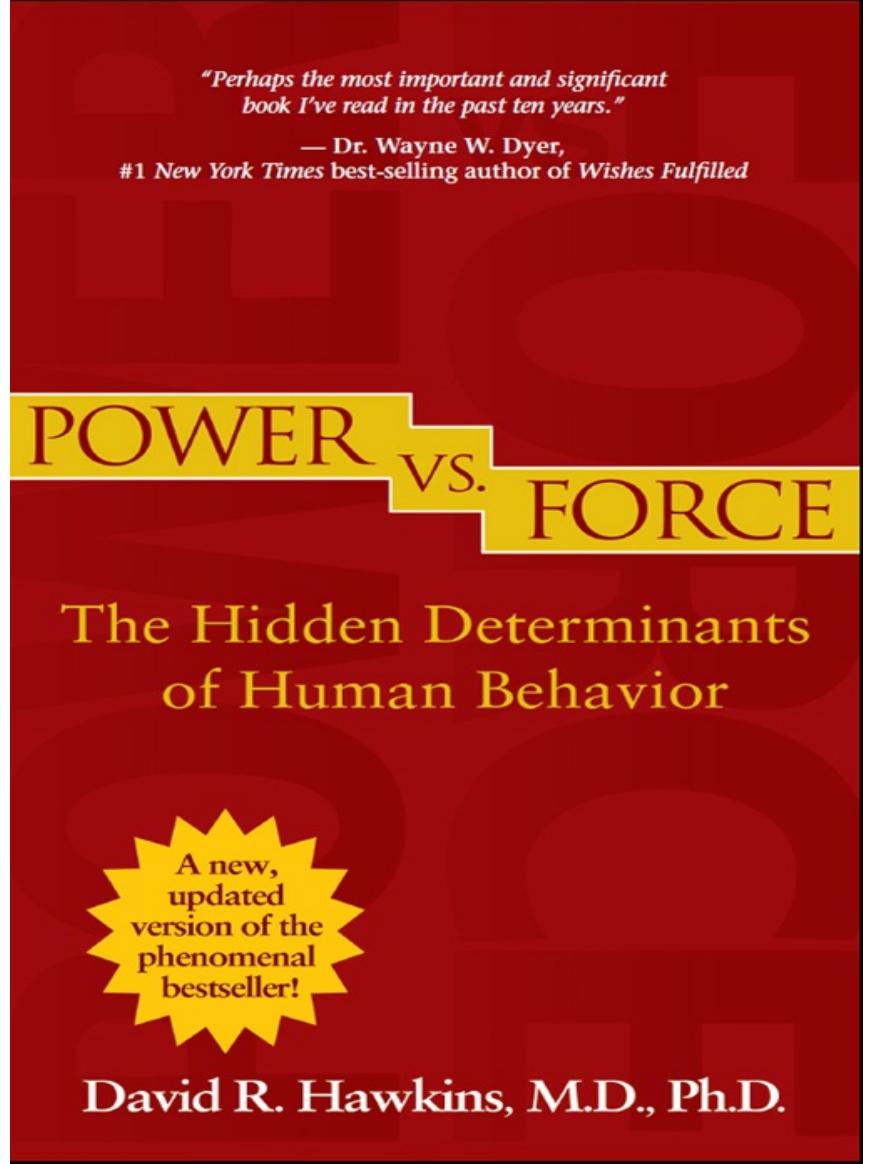Power vs. Force by David R. Hawkins

Author:David R. Hawkins [Hawkins, David R.]
Language: eng
Format: mobi, pdf
Publisher: Hay House, Inc.
Published: 2013-07-31T14:00:00+00:00
CHAPTER 14
Power in the Arts
The great works of art, music, and architecture that have come down to us through the centuries are enduring representations of the effect of high-energy attractor patterns. In them, we see a reflection of the commitment of the master artists of our civilization to perfection and grace, and thereby to the ennoblement of humanity.
The fine arts have always provided the venue for man’s highest spiritual strivings in the secular realm. As far back as the time of the sculptor Phidias in ancient Greece, it has been the role of the arts to realize, in physical media, the ideals of what man could and should be, to set down in tangible form, accessible to all, a distilled expression of the human spirit.
Great art bodies forth the ordered essence not only of human experience, but of the world we live in. It is this that we call beauty. Like the theoretical physicist, the artist finds order in apparent chaos. Where there was only a block of meaningless marble, Michelangelo saw David and the Pietà, and with his chisel, removed the extraneous stone to liberate that perfected image. Contemplating the random patterns of a meaningless plaster wall in the Sistine Chapel, he conceived through the inspiration of Art a wondrous ABC, and then through the technique of art, he actualized A→B→C, which we know as The Last Judgment.
The bequest of the arts to mankind is internal, too: in beholding realized beauty, a sensitivity to the beautiful is inculcated in us, enabling us to discover, and create, our own aesthetic rewards in the apparently disordered jumble of existence. Art and Love are man’s greatest gifts to himself.
There is no art without love. Art is always the making of the soul, the craft of man’s touch, whether that touch is corporeal or the touch of the mind and spirit; so it has been since Neanderthal times, and so it will always be. Thus, we find that computer-generated art and even great photographs never calibrate as highly as original paintings. A most interesting kinesiologic experiment, which anyone can reduplicate, is to test the strength of a person who is looking at an original painting and then repeat the test looking at a mechanical reproduction of that painting. When a person looks at something that has been handcrafted, he goes strong; when he looks at a reproduction, he goes weak, and this is true regardless of pictorial content. An original of a disturbing subject will make the test-subject go stronger than a copy of a pleasant subject. Dedicated artists put love into their work, and there is great power in both the human touch and human originality. Therefore, kinesiology provides a fail-safe detector of art forgery.
The great psychoanalyst Carl Jung emphasized over and over again the relationship of art to the dignity of man and the importance of the human spirit in art. Jung himself (and his work) calibrate highest out of all the famous psychoanalysts in history. (Many of the others, aligned with such attractor patterns as material determinism, produced much lower scores.
Download
This site does not store any files on its server. We only index and link to content provided by other sites. Please contact the content providers to delete copyright contents if any and email us, we'll remove relevant links or contents immediately.
The Art of Thinking Clearly by Rolf Dobelli(8841)
Mindhunter: Inside the FBI's Elite Serial Crime Unit by John E. Douglas & Mark Olshaker(7834)
Change Your Questions, Change Your Life by Marilee Adams(6641)
Nudge - Improving Decisions about Health, Wealth, and Happiness by Thaler Sunstein(6633)
Mastermind: How to Think Like Sherlock Holmes by Maria Konnikova(6235)
The Power of Now: A Guide to Spiritual Enlightenment by Eckhart Tolle(4754)
Men In Love by Nancy Friday(4320)
Factfulness: Ten Reasons We're Wrong About the World – and Why Things Are Better Than You Think by Hans Rosling(4021)
The Confidence Code by Katty Kay(3566)
Thinking in Bets by Annie Duke(3531)
Man and His Symbols by Carl Gustav Jung(3315)
Three Women by Lisa Taddeo(2920)
The Worm at the Core by Sheldon Solomon(2917)
Why Buddhism is True by Robert Wright(2826)
Liar's Poker by Michael Lewis(2810)
The Inner Life of Animals by Peter Wohlleben(2765)
Descartes' Error by Antonio Damasio(2731)
The Power of Mindful Learning by Ellen J. Langer(2710)
The Slow Fix: Solve Problems, Work Smarter, and Live Better In a World Addicted to Speed by Carl Honore(2574)
